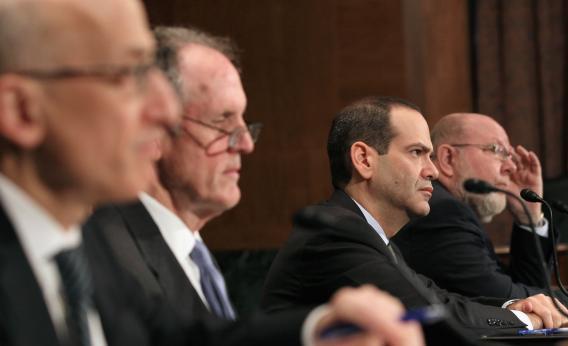The dramatic $700 billion bailout of U.S. banks calmed markets and helped stabilize the financial system, but that doesn’t mean taxpayers will see any direct returns from the investment. The Treasury says the Troubled Asset Relief Program might turn a profit. But the agency’s fuzzy math wouldn’t fly with any sensible portfolio manager. What it calls a gain looks more like a loss of at least $230 billion.
Treasury’s rosy projections aren’t half as bad as its methodology. The government declares a return when an investment’s payments exceed the initial cash outlay. That boldly disregards the cost of money and its value over time.
By contrast, consider Warren Buffett’s bet on Goldman Sachs. In the thick of the crisis, he loaned the bank $5 billion in exchange for 10 percent annual interest and stock warrants. Goldman paid back the Oracle of Omaha a few years later. Though hanging on to the warrants may cost him in the end, even without them he booked an annualized return of 14 percent.
Compare that to TARP, which had seven broad components. Start with the banks. Treasury estimates an ultimate profit of $22 billion. Even if that’s achieved by year’s end, taxpayers will have earned a paltry annualized return of 2 percent. Simply investing in the S&P 500 index would have earned 14 percent a year. Worse, applying Buffett’s Goldman return as the risk-based cost of capital turns the net present value of the bank rescue into a loss exceeding $15 billion.
Then there’s Fannie Mae and Freddie Mac. Treasury says its “loss” may shrink to $28 billion in a decade, generously assuming that profits from the giant mortgage backers will exceed housing-bubble era averages. Even using that questionable projection generates a net present value loss of $88 billion. Tabulate automakers and AIG similarly, figure a $28 billion loss on mortgage backed securities Treasury bought and sold, and accept Treasury’s estimated $46 billion loss on foreclosure programs and its $3 billion gain on its flop of a public-private toxic asset scheme - and it all adds up to a whopping $230 billion loss, adjusting for the cost of capital.
Even using a more conservative discount rate of 10 percent would still leave the loss at over $190 billion. The U.S. Treasury isn’t a hedge fund, so was willing to invest poorly for the bigger, unquantifiable return delivered by stability. But rather than try and obscure the painful price tag of its rescue, it should be emphasizing that avoiding a global meltdown was worth the cost.
Read more at Reuters Breakingviews.
